- Time of past OR future Camino
- VdlP(2012) Madrid(2014)Frances(2015) VdlP(2016)
VdlP(2017)Madrid/Sanabres/Frances reverse(2018)
When was this, Stivander? Was the albergue busy?our meal at Me Gusta Comer:

| Remove ads on the forum by becoming a donating member. More here. |
|---|
When was this, Stivander? Was the albergue busy?our meal at Me Gusta Comer:
September last, only few on the roadWhen was this, Stivander? Was the albergue busy?
Both photos are of the same church - Iglesia de la transfiguración del Señor in San Salvador de PalazueloIt's intresting that all the Templar churches hereabouts have external steps to their towers.
I don't have a record of where these two are, but I'm sure they're on this stage. Over to you @Raggy!
View attachment 71888

Question: Why do church campaniles here have steps up to the bells and little roofs near the bells?
Answer: In the rest of Spain, they have a rope from the bell to ring it. And the bell belongs to the church. But here, the bells belongs to the pueblo. We used to use the bells to communicate – not just to call the hours or announce mass. We struck the bells directly, not using a rope to allow us to signal different things with specific tunes. One tune meant “Bring the animals up from the low field,” another tune meant “Take them back down,” and other tunes could let people know that someone had died or some other event had taken place.
Question: So it’s like in the Canary Islands where people have a special whistling language that enables them to discuss Kierkegaard over vast distances and across valleys?
Answer: It’s your bedtime pal. You need to rest to walk tomorrow.
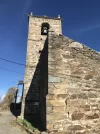
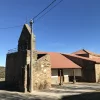
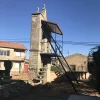
I'm delighted with your response, lots to interest me there. (Incidentally, where are you? I've noticed a distinct time-zone-posting effect with our two Pacific coast co-peregrinas).Both photos are of the same church ....
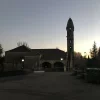
Both photos are of the same church - Iglesia de la transfiguración del Señor in San Salvador de Palazuelo

Iglesia de la Transfiguración del Señor
La iglesia está construida con una sola nave, y a lo largo de los años ha sufrido varias remodelaciones, conserva del románico parte de los muros norte y sur de la nave, con las dos portadas.www.romanicozamora.es
What's the transfiguration? It's when Jesus took Peter, James, and John, the brother of James up a mountain and "His face shone like the sun, and his clothes became as white as the light," and then Moses and Elijah showed up. It made quite an impression on the disciples . Well, it would, wouldn't it?
I met an eccentric old man once, who had a theory that Jesus and other religious figures were actually time travelers who, thanks to their knowledge of modern detergents, had Ariel whiter than white clothes. Of course, it's not an entirely satisfactory theory. For one thing, the gospels don't mention Jesus's floral scent and soft towels.
I heard a far more plausible explanation for the stairs on the side of the churches in this region, when I asked about them over dinner at Bar La Trucha in Olleros de Tera. Here's the relevant section from my blog about that conversation:
View attachment 71914View attachment 71915View attachment 71916
Another feature that you see in the churches from this area onward is a large, covered, space at the entrance or the side of the building. I guess the parishioners needed somewhere to wait out of the rain before mass, and pilgrims must have bedded down there, when no other shelter was available.
Well, it sounds like a visit to Rionegro is worth a trip to Spain in itself.
Day 7 - Rionegro del Puente to Entrepenas (23 km)
I will be waddling today, after so much delicious food. I understand that Mombuey has the last shop before Puebla de Sanabria (next day's destination). But tonight, if I stay in one of the Casa Rurales in Entrepeñas, I should get dinner and breakfast, so I'll only need to stock up on snacks. If I walk on to Asturianos, the accommodation is at the polydeportivo. Gronze indicates that there is a bar or restaurant there.
OK, I'll bite. How do you know those are Templar churches, and why wouldn't they have external steps to their towers?It's intresting that all the Templar churches hereabouts have external steps to their towers.
Day 8 - Entrepenas to Puebla de Sanabria (19 km)
This sounds like a really nice walk. I need to make a decision on where to stay in Puebla de Sanabria. This might be a time to splurge, since I'll get there by mid-afternoon and will have time to enjoy nice facilities. The albergue doesn't get top reviews. Is this the time for the Parador (remember I am paying with virtual money, so I can afford it). Or should I go ahead across the river and stay on that side of town? It seems there are quite a few hotels and restaurants on that side.
The next day I will be asking about the AVE construction and some awkward sections, so get your notebooks out.
In November 2017, I stayed at the Hotel Carlos Quinto - The albergue was closed. Carlos is a reasonable price for very comfortable and stylish rooms. Its restaurant looks the part but did not live up to expectations. My companions and I were served an awful, oily, dinner. The indigestion kept me up half the night.I need to make a decision on where to stay in Puebla de Sanabria.
Ah! I don't have a definitive answer to that - it's in my head. The Templars certainly got a mention on some of the stone tablets like this one at Mombuey.OK, I'll bite. How do you know those are Templar churches, and why wouldn't they have external steps to their towers?
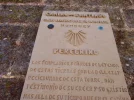
I have included that track, but there is another track that seems to go straight across the countryside, farther from the highway:

37 Camino Sanabrés : Riego del Camino - Tábara
37 Camino Sanabrés : Riego del Camino - Tábara Hiking trail in Riego del Camino, Castilla y León (España). Download its GPS track and follow the itinerary on a map. Hace parte de la travesía de España desde Tarifa hasta Hondarribia pasando por Santiago y la Punta Estaca de Bares. Con las...www.wikiloc.com
You can see both of those country roads joining up with the road from Granja to the monastery, by following the Granja-Monastery road on Google Earth street view.
Normally I wouldn't get into such detailed study of the walking route in advance, but under these circumstances, it is a good alternative to walking.

In November 2017, I stayed at the Hotel Carlos Quinto - The albergue was closed.
No problem. I walked all the way back today to tour the grounds. That is why I haven't been able to get on to my next stage yet.Sorry to back up a few days, but there is a drone visit to the Moreruela monastery in this article
Day 9 - Puebla de Sanabria to ???
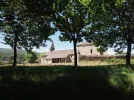
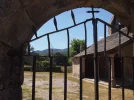
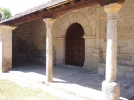
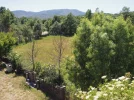
Which EU regulations are you thinking of?She served food from her organic garden (probably a violation of EU regulations)
Well I don’t really know, but I have been told this various times — like when the 90-something owners of the bar in Castromonte went to their garden and brought me back some food. The mayor, I think it was, told me he wouldn’t say anything but it wasn’t allowed. Irene (in Lubian) herself told us she was not supposed to be serving us her own food, so I assumed she knew. Maybe this is folklore about the big bad bureaucracy, can you set me straight?Which EU regulations are you thinking of?
I can't think of an EU regulation,, but I am not a lawyer. I can think of some celebrated restaurants that proudly serve seasonable vegetables from their own fields and wild plants foraged from the surrounding country - I doubt that they're flouting laws:Maybe this is folklore about the big bad bureaucracy, can you set me straight?
So maybe it has more to do with what they are licensed to do. I remember once in the Sierra de Gredos going to a beautiful casa rural and asking if we could eat dinner there, but they told me they were only licensed to serve guests. Well, I am glad I don’t need to feel guilty about eating those home grown foods!I can't think of an EU regulation,, but I am not a lawyer. I can think of some celebrated restaurants that proudly serve seasonable vegetables from their own fields and wild plants foraged from the surrounding country - I doubt that they're flouting laws:
L'enclume
Manoir aux Quat' Saisons
Arpege
At Subline Comporta you can eat in the vegetable garden itself.
In Italy there is an Agriturismo industry that brings tourists to stay and dine at farms. enjoying home produced veg., meat, cheese etc.
I've just checked, and I stayed at the municipal albergue in Requejo, just north of N125. I don't remember anything about the facilities, but I do remember that it was comfortable.
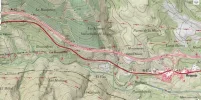
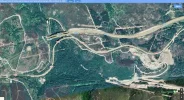
It's the municipal albergue. I have the same sello. The photo brings back a couple of nice memories. When I stepped into that kitchen on a chilly November afternoon, I met a couple that I hadn't seen since Fuenterroble de Salvatierra on the VLDP. It was so moving. We hugged then they shared their hot chocolate and biscuits with me. The layout is a bit different now - a bit less roomy as they had to create access to the shower block at the back.I'm not sure which albergue i stayed at in Lubian
Yes. The route no longer takes you along the river (although I managed to follow it for a bit in 2017). You walk on the N525 for 4~5 km and be careful to take the track off the road to avoid the terrifying bridge and tunnel (as described in the link provided by Peregrina2000 above)I have a question about the walking route.
Yes, Raggy, my connection with the Swedish couple also meant a lot to me, because as I've mentioned previously, biking the Camino can be a lonely affair. I had actually met them the first time in Zamora, sharing one of the small dorms with them. They had bussed on ahead to Puebla de Sanabria, because they were short of time. They told me that they passed me on the bus along the way.I met a couple that I hadn't seen since Fuenterroble de Salvatierra on the VLDP. It was so moving. We hugged then they shared their hot chocolate and biscuits with me.
Day 10 - Requejo de Sanabria to Lubian (19 km)
So I decided to stop in Requejo de Sanabria to investigate all of the options presented! I'd better get moving now or I think all of you will be charging on ahead without me!
Now from Requejo to Lubian. I can see that I've been given some good advice about about that route and the lodging options.
Anything more to suggest?
I doubt that many people know about this, p2000. It was certainly a revelation to me, and will be a priority on my itinerary for my next non-virtual Sanabres! Any thoughts on why the thing is so big? A lot of skilled labour went into constructing that huge wall. The structure is marked on Open Street Map.It’s called a Cortello de Lobos, and the one outside of Lubián is several centuries old. It is huge.
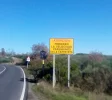
Did exactly that,, nearly 2 years ago,, 2 of the very best eating experiences ever!! Thanks TeoDay 6 - Santa Marta de Tera to Rionegro del Puente (27 km)
Here is the long anticipated stage to Me Gusta Comer. However, I have a slight quandary...
If I walk the 27 km to Rionegro, I will be eating my evening meal at Me Gusta Comer. Since I have unlimited time, should I take two days by stopping in Olleros de Tera or Villar de Farfón and then making a very short walk to Rionegro the next day? I would arrive very early, in good time to shower, do laundry and put on my finery for the mid-day meal, AND then eat there in the evening too!
Good to hear. I have deleted that note from my spreadsheet.If there was once a bedbug problem on this stretch of Camino, it was dealt with long ago, but the notoriety lingers in
Yes, I have considered this option, and I have the track on my phone in case of inspiration. However, oddly, even on a virtual camino, like a real one, I am feeling the urge to move more quickly to my destination! Therefore, I'll take the shorter route.Have you considered heading south from A Gudina and hike the southern branch of the sanabres via Verin?
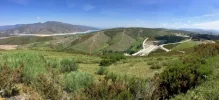
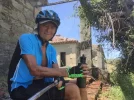

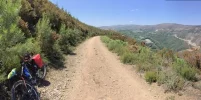
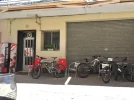
Better that they saw it, and not you - it would have been disconcerting to be in your compromised position and have a wolf appear!I had ducked behind a bush and... they told me they had seen a wolf!
I will keep this in mind for a February camino.Laza has a very unusual and well known Carnaval, called the Entroido.
In 2017, A German friend and I left A Gudiña in a cross-fire hurricane, and we howled at the morning, driving rain. I doubt that we would have made it to Laza that day if we had tried. But it's alright now. In fact it's a gas ...If necessary, I could stop at 20 km in Campobecerros, but hopefully I'll go on to Laza. Looking at the map, I might collapse at Hostal Laza near the entrance.
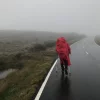
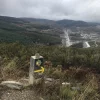
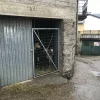
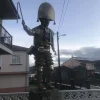
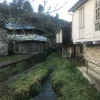
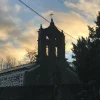
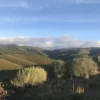
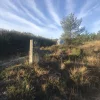
Also sort of like the tiny village of Villvieja, on the Invierno, where the servants from the Castillo de Cornatel lived.That abandoned worker village was, I was told, accommodation for the workers who built the reservoir below, the Encoro das Portas. Sort of like the situation at the dam in Grandas on the Primitivo.
I think I did make it to Laza, since you all say this is a pleasant stage.
I don’t hope so.I hope @C clearly hasn’t fallen down the shale slide into Campobecerros or been eaten by that wolf my friends saw up on the ridge out of A Gudiña.
what a lovely leisurely camino this is
I hope @C clearly hasn’t fallen down the shale slide into Campobecerros or been eaten by that wolf my friends saw up on the ridge out of A Gudiña.
Surely our brave and virtual pilgrim is having some rest
I expect she's exploring the church of Santiago in Campobecerros,
Oy, me too. It's seriously slowing me down.Also got caught up at the new Pilgrim Bar Zoom that keeps popping up everywhere.
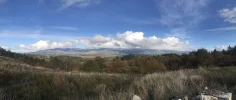

I have been checking a bit about your region in Western Australia, as I just knew very little about it, just Perth, and envious of what appears to be a nice and somewhat unspoilt area on the seaside.This is not actually relevant to this thread, but since you are the guys I’m communicating with at this time I thought I’d update you on my real-time situation in this time of Coronavirus. I live in the Gascoyne region of Western Australia. I just checked, and if we were a US state we would rank as number 5 in area just after Montana. Right now we are cut off from the rest of the country. The main highways, (2), in and out have police roadblocks. On the official statistics we have one case of the virus, but in reality that is a lady who we personally know, who is actually in isolation in Perth, 1000km away, imposed after she returned from a holiday on a cruise ship. Because of her home address she is recorded as our only Gascoyne case. We live in the regions' main town, Carnarvon, which has a permanent population of about 7000.
So, at the moment, although my wife and I are complying with all the self-isolation regulations, we are feeling that we might be in the safest place in the world. The Gascoyne region is named for the river that flows seasonally, and has its headwaters 600km inland. Our town is built on the river delta.
I didn't see it in September 2019 or November 2017.Bocatería Bejé was its name in case anyone going through recently saw that it had opened — it was right on the main drag from albergue into town.
Oh no. I wasn't thinking of stopping. (Well, I was, but I immediately realized that was not the right thing to do!) I was thinking that I need to walk a bit faster. Or, I would just take a side trip for a day or two to meet up with you or @VNwalking or others, wherever you are. That is the beauty of Spain's good ground transportation system.I hope... that you do NOT abort this camino.
Yes, I hit my saturation point very soon after the first bite. But the "experience" is important.I like pulpo, but find I hit my saturation point pretty quickly.
I rarely disagree with you, @C clearly but feel moved to ask a rhetorical, "Really?"But the "experience" is important.


If you want a pleasant start to the day, I recommend having a coffee and pastry at Bar Copas. which I mentioned upthread. It's across the square from the bar with the vine growing over the entrance. Walk toward the supermarket and it will come into view. I think it's good treat yourself to a pastry this morning, because in terms of scenery, you can expect to feel rather drained by the very ugly industrial estate before you reach Ourense's satellite town (Seixalbo). There is, I'm told, an alternative route by a river that avoids the worst of the industrial estate. Someone else will have to provide instructions or a link to that.I have timed this perfectly - I will walk into Ourense on Easter Sunday. Being a virtual Camino, we can imagine that there will be Easter crowds, but I will still have my choice of accommodation.

But the "experience" is important.
I stand corrected! The experience was not at all important except to satisfy my curiosity about the supposed delicacy. I was very satisfied to not desire another bite.I rarely disagree with you, @C clearly but feel moved to ask a rhetorical, "Really?"
Nah. I've never eaten pulpo and have had one rewarding camino after another after another.
That is good to know about the link between the Sanabres and the Invierno. Have you done it? But then I read @peregrina2000 's suggestion about the Sil River Gorge and the Parador San Estevo. I will have to look into those options.you could take the train to Monforte.
By the time I get there in real life, we will all be accustomed to using such regularly, and the N95s will probably be available! Thanks for all the detailed observations and suggestions!Strap on an N95 mask
A few months ago when it looked like I might be in Ourense for part of Semana Santa, I had decided on Hostal Grelo.Grelo Hostel - Walking distance from the center. Excellent, clean, modern, hostel.
.
I didn't realize that it was under renovation. It was recommended to me by a friend. Tried to find some more information:I had no idea Ourense had so many museums. But I didn’t see the Archaeological Museum on that webpage. Maybe that’s because it is closed for renovation. (Though some of the main pieces are being displayed at the San Francisco cloister up next to the old albergue). I was in the museum once years ago and enjoyed it, especially because it is in such a nice old pazo.
Come back, @C clearly — you’ve only got those last 100 kms to go!!!!!I stand corrected! The experience was not at all important except to satisfy my curiosity about the supposed delicacy. I was very satisfied to not desire another bite.
That is good to know about the link between the Sanabres and the Invierno. Have you done it? But then I read @peregrina2000 's suggestion about the Sil River Gorge and the Parador San Estevo. I will have to look into those options.
By the time I get there in real life, we will all be accustomed to using such regularly, and the N95s will probably be available! Thanks for all the detailed observations and suggestions!
A few months ago when it looked like I might be in Ourense for part of Semana Santa, I had decided on Hostal Grelo.
I will need to study my KML files more thoroughly to compare routes.
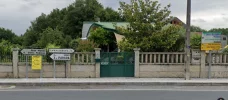
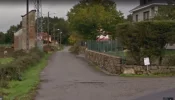
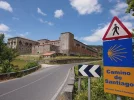
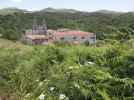
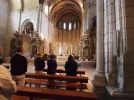
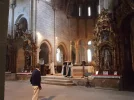
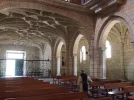
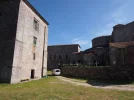
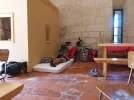
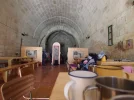
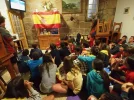
if you can continue on 8 more kms, you could spend the night in the albergue in the monastery of Oseira.
it was the coldest and dampest night I have ever spent in an albergue
I will give this a try - if the weather is good and I feel energetic. Then I will be able to compare the monastery with the monastery in Samos, to see which wins the cold and damp contest. I have edited my last post to show that I'm walking to Oseira. I will need to add some information to my spreadsheet.What an imposing sight the monastery is! And of course it is a world unto itself.
You lucky pilgrim. On both occasions, I've allowed others to set my pace on this section - which has always meant taking the shorter route. For that reason, I can only tell you about Ourense to Cea.I have edited my last post to show that I'm walking to Oseira.
Having only gone right, I regret I don't know for sure. You may be correct that both routes go up the same steep road. With Ourense sitting in a valley, there's no way to avoid a climb of some sort.Are you saying, Raggy, that the route that goes by the baths does not go up the steep road?
Pretty sure that I didn't pass a big bus barn.@Raggy — do you remember passing the huge bus barn for all city buses?
Fantastic!We were walking by once as the fleet was leaving in the early morning and nearly every single driver honked and waved, it was a nice sendoff.
I'm in Chantada tonight on my virtual Invierno, so thanks for this, Laurie. I'll push ahead on my daily walk to make sure I land there! It sure looked like a nice spot - much nicer than Silleda or Bandeira.So if you are feeling like a splurge at this point, that is definitely the way to go.
Pilgrim accommodation in Estación de Lalin is in a big yellow building across the road from the Taberna A Vento, which is where you need to go to pick up the keys. It's not exactly "directly on" the camino as Bronze suggests, but as long as you go into the village, you can't miss it. The accommodation is quite comfortable - Best value if you're with friends is to share a basic room with multiple beds and a shared shower.. The taverna is ideal for dinner and breakfast too - Very warm welcome and good, home-cooked regional food. Some pilgrims who stayed in the village at the same time as us were very happy with the rooms at a private house, which are not listed on the Gronze website. I guess they must be in a guidebook.It looks straightforward, leaving the monastery and passing though Castro Dozón to join the other route from Cea. Then walking to Estación de Lalín. But where is the albergue in Estación?
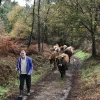
I can also I can also give this place a very enthusiastic recommendation. The owners also have the pizza place up the street. It was great pizza too - or I thought so, anyway. Maybe I was just starved for variety. The people were really really lovely and very Pilgrim friendly.But if they have any sense, they'll have spent the night at the Lalin Centro albergue.
Thanks - I've fixed them.I think you‘ve got your distances a bit off
I'm glad to know I wasn't the only person confused. I spent quite a bit of time combobulating myself. I never knew until minutes ago that that was a word. I have been familiar with discombulation but didn't know it could be undone.)Confusingly, the A Laxe Albergue is also sometimes referred to as a Lalin albergue. A Laxe falls under the Lalin municipality I guess. I don't hear anyone else talking about this, though, so I may be the only one who gets tied in knots over it. I hope I don't infect anyone else with my discombobulation.
a km or two past Laxe for a splurge at Pazo Bendoiro.
Thanks for this recommendation. VN and I can meet up there, and maybe walk into Santiago together!I'll push ahead on my daily walk to make sure I land there!
Some airports in the US have signs for "recombobulation zones" after the security area. An attempt to bring some levity to the experience, I think.I'm glad to know I wasn't the only person confused. I spent quite a bit of time combobulating myself. I never knew until minutes ago that that was a word. I have been familiar with discombulation but didn't know it could be undone.)


